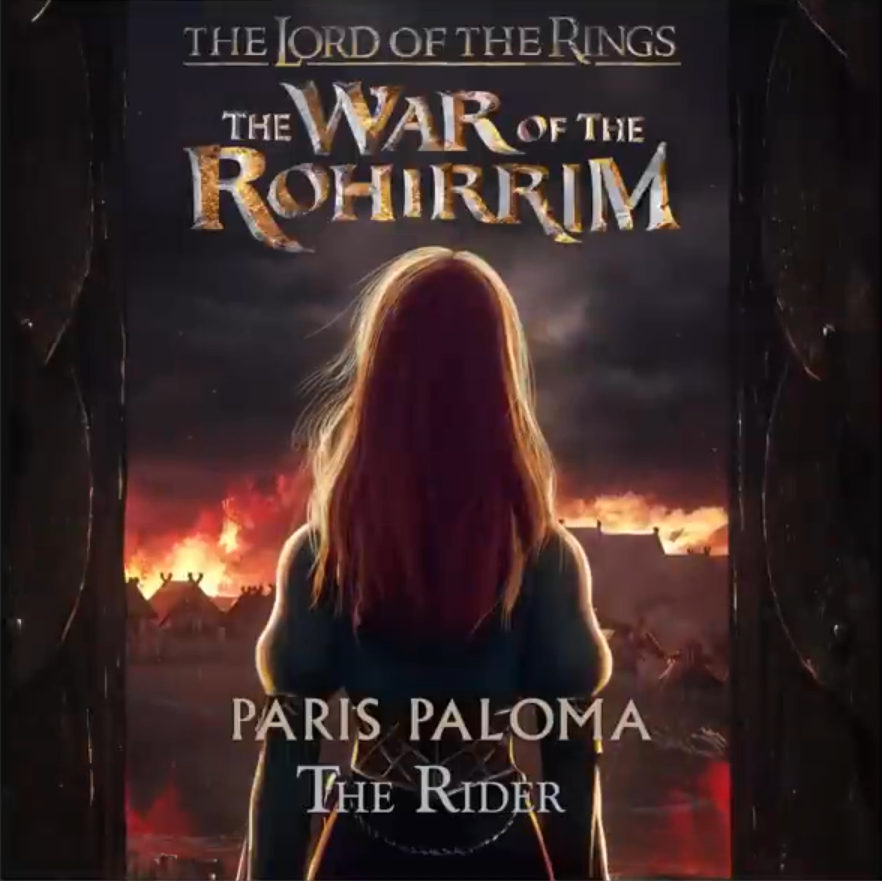
Warner Bros. Releases “The Rider”, a Song by Paris Paloma
By now, thousands of us who have been awaiting the upcoming Warner Brothers film, The War of the Rohirrim, have heard the song “The Rider” in its entirety. “The Rider” is a song sung by English singer-songwriter Paris Paloma for the film’s end credits. Its lyrics reference an invasion of Rohan during the reign of Helm “Hammerhand”. Against the background of this crisis, the song serves as a call to arms to the protagonist, Héra, the daughter of Helm, to lead a counterattack. “The Rider” was released on November 14.
Not exactly a conventional pop song, “The Rider” is performed by Paris Paloma, a choir, and an orchestra with violins, flutes, at least one guitar, and other instruments, including a martial percussion section. Although we have yet to hear much of Stephen Gallagher’s soundtrack for The War of the Rohirrim, “The Rider” seems like it could mesh well with it. At times it also seems to me to be reminiscent of an English folk song. I would like to hear versions of this song with other instrumentation, including the Anglo-Saxon lyre. (About which, more below.)
Please read to the end of this article for a chance to greet the cast and crew of The War of the Rohirrim as they arrive on the red carpet at the world premiere of the film in London.
Lyrics
This is what I have been able to transcribe, first from my own listening, and later with reference to the lyric video (courtesy of Paris Paloma):
You ask, who will answer? In need who will come?
When the last line is broken, when the day is all but done.
Héo is se wind, héo is se wind.
You are the wind that will carry them home.
When fire burns low, turns into smoke, when all the songs are sung,
Remember those and all who rode to battles lost and won.
I know the fear you have inside, let hope rule over doubt.
If dark the night, be the light when all other lights go out.
You ask, who will answer? In need who will come?
When the last line is broken, when the day is all but done.
It’s you, your name they’re calling. From the deep they will rise.
Go forth and they will follow. Time to fight, it’s time to ride.
Héo is se wind, héo is se wind.
You are the wind that will carry them home.
Arise, now, rider. Arise with the dawn.
You don’t know what fate awaits, but know you’re not alone.
Héo is se wind, héo is se wind.
You are the wind that will carry them home.
Ride, now, for ruin. Ride for your kin.
Take up your shield, maiden, and ride to the world’s end.
The lyrics are in Modern English, except for the repeated refrain, héo is se wind, which is in Old English, representing the language of Rohan. It means “she is the wind”. I have checked the lyrics against several lyrics sites online, and it seems we largely agree. [This article originally gave the line “let hope below the doubt”, for “let hope rule over doubt”, although it made little sense; and “Rise now, rider. Oh, rise…” for “Arise now, rider. Arise…”, which does not really change the meaning. These have since been fixed thanks to the release of the lyric video.]
Those who are familiar with The Lord of the Rings will recognize the words, “Ride, now, for ruin … and ride to the world’s end.” Similar words were spoken by Théoden in the films, and by Éomer in the books. The line, “From the deep they will rise,” may be a reference to Helm’s Deep, the valley to which many of the Rohirrim fled during the invasion of Rohan. Also, the line, “Take up your shield, maiden,” is apparently an oblique reference to the concept of a “shieldmaiden”, a word Éowyn of Rohan uses to describe herself in The Lord of the Rings.
This concept was not original to Tolkien: the shieldmaiden Hervǫr is a character in the medieval Norse Hervarar saga ok Heiðreks konungs, and there were other shieldmaidens in the Norse sagas. (Incidentally, J.R.R. Tolkien’s son Christopher was the author of a critical edition and English translation of the aforementioned saga, titled “The Saga of King Heidrek the Wise”.)
Regarding the character of Héra in The War of the Rohirrim, producer Philippa Boyens has also compared her to the historical figure Æthelflæd (ca. 870-918, also known as Ethelfleda). Æthelflæd was the daughter of Alfred the Great and the husband of Æthelred, ruler of the Anglo-Saxon Kingdom of Mercia. She was proclaimed the ‘Lady of the Mercians’ (i.e. their ruler) after the death of her husband and continued the battle against the Vikings.
Scenes
The music video released by Warner Bros. also contains several scenes from the film, some of which have not been seen before. Some of the scenes seem to be related, although as with movie trailers, scenes that appear to be occurring sequentially may actually occur in totally different parts of the film.
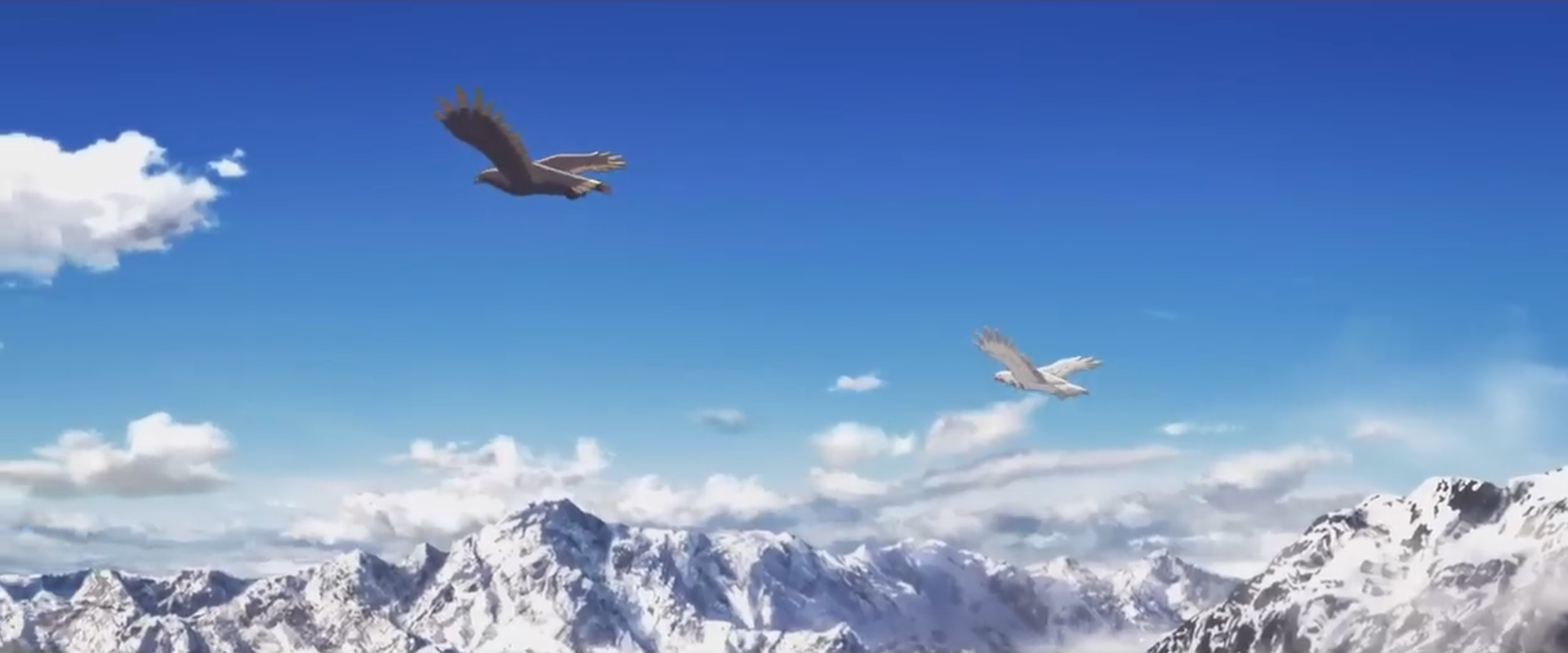
We begin with a view of two eagles, a dark gray and a white one, soaring above snowy peaks. These peaks are presumably the White Mountains that run along Rohan’s southern border, although the Misty Mountains present a less likely possibility. The white eagle (a fledgling eagle, according to the Visual Companion) banks right. Héra stands on a rocky pinnacle surrounded by the snowy mountains. She turns as the white eagle flies past her. Then there is a close-up shot of Héra with her hair blowing in the wind.
We have heard mention of eagles since the earliest screenings, but I did not give them much thought. Perhaps I was influenced by the film Brave and assumed they were just symbols of Héra’s love of the outdoors and unrestrained nature. However, I am increasingly wondering if the eagles are a device of the film’s plot, as Tolkien also used them (though sparingly, he insisted) in all of his best-known works.
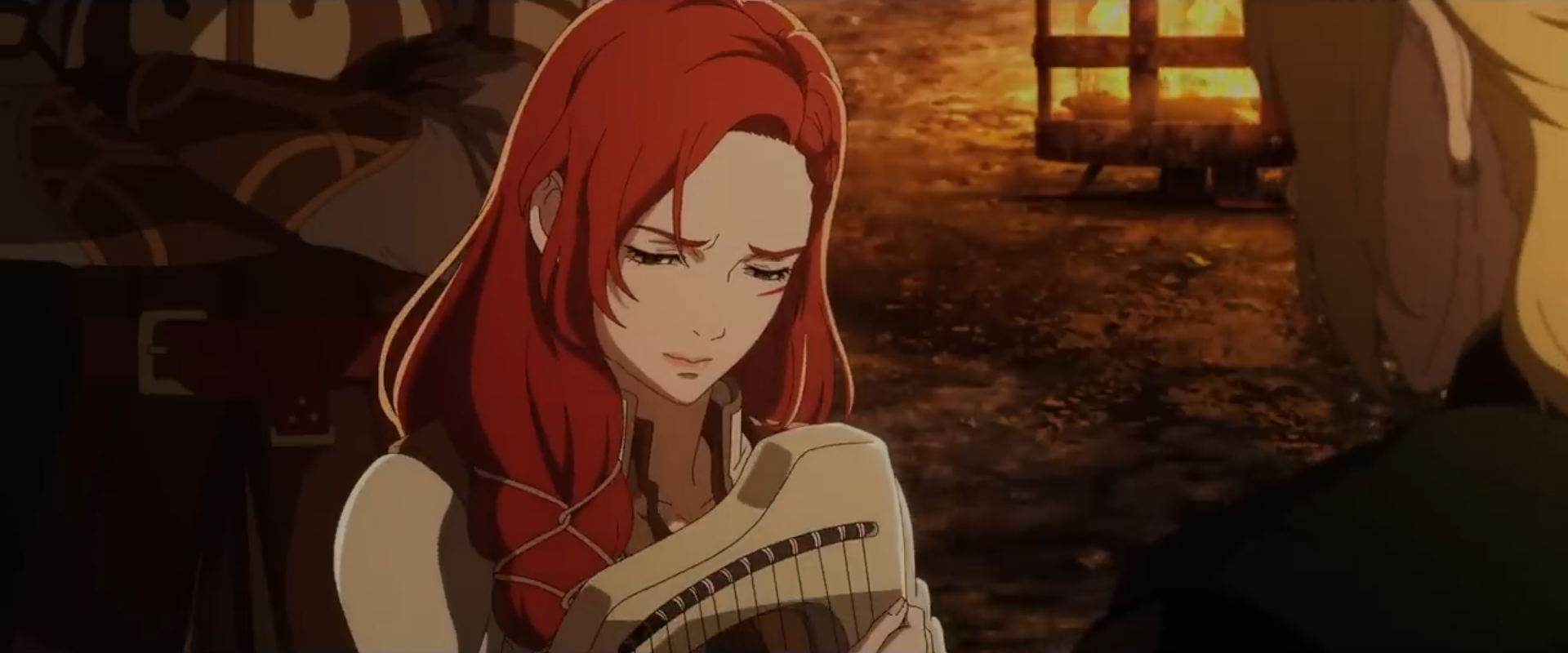
In the next set of scenes, Héra’s brother Háma hands her a stringed musical instrument amid horses saddled and ready to ride. This instrument appears to be some kind of lyre. Héra takes the lyre and hugs it to herself. In the next scene, Haleth rides out of the gate of Edoras. (Or maybe Háma, but it looks like Haleth to me.) Still holding the lyre, Héra stands within the gate of Edoras looking out, people on either side of her, and a lit pyre behind her.
The word “lyre” normally refers to a stringed musical instrument used anciently in Greece and other Mediterranean countries. However, in 1939 fragments of a musical instrument were uncovered at the Sutton Hoo burial site in the county of Suffolk, England. Attempts to reconstruct the instrument led to the conclusion that it was an oblong rectangular-shaped lyre. The same sort of instrument appears in an illustration of King David in the 8th-century Vespasian Psalter.
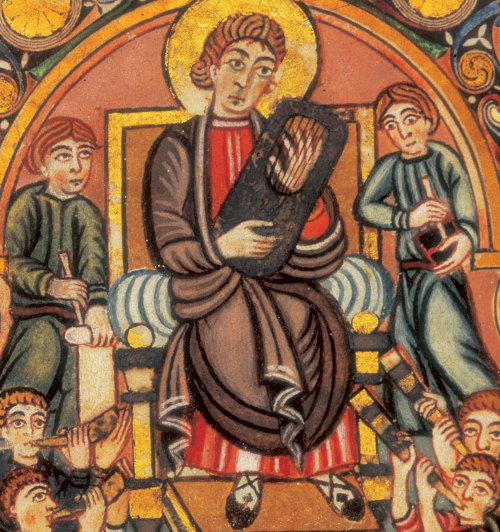
In the less than a century since the discovery of the Sutton Hoo lyre, similar lyres have been found in Germany, Scandinavia, and even as far east as Kazakhstan. It’s not clear whether the Old English word hearpe referred to this type of lyre, or to the frame harp associated with the Celtic peoples of the British Isles. Likely it was used for both types of instruments. The lyre in The War of the Rohirrim appears to be of a different type altogether.
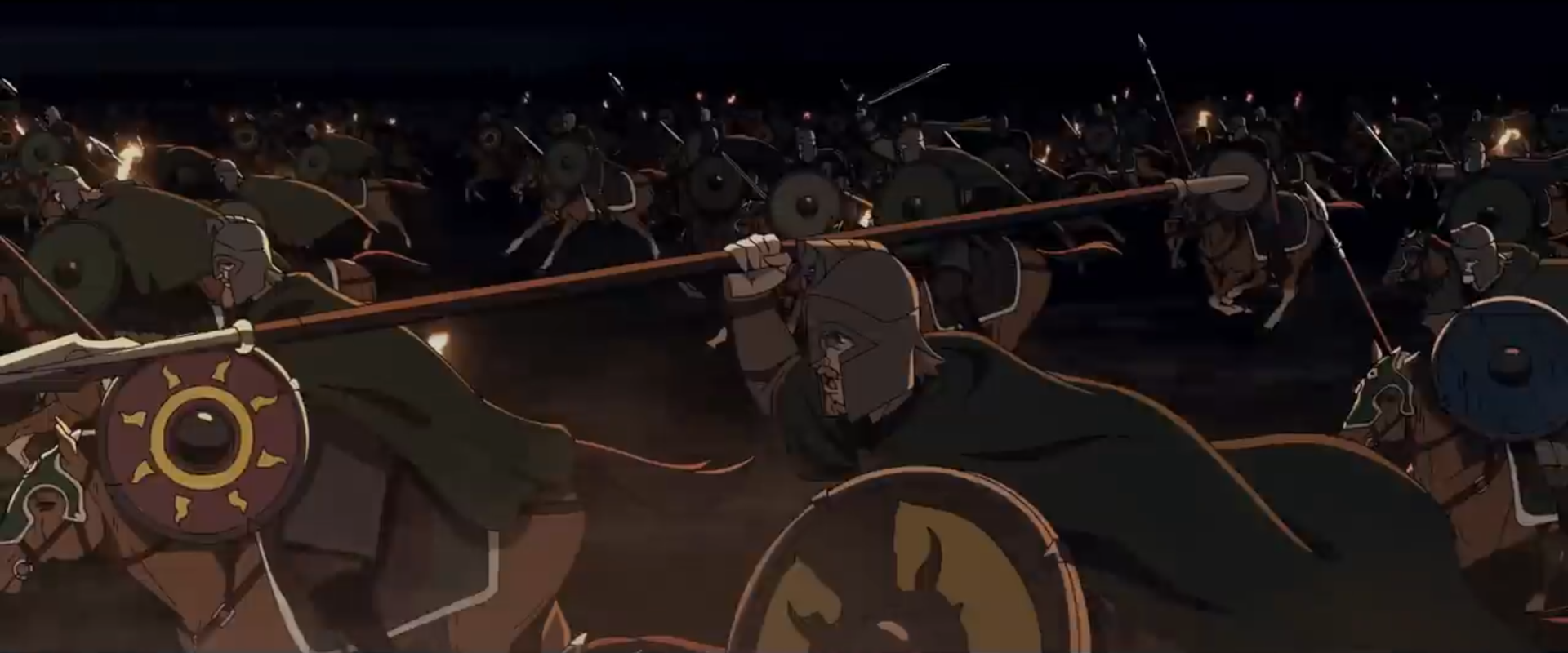
We are then shown Helm sitting atop his horse. The Rohirrim brandish their spears and shout. Helm gestures forward with his right hand holding a hammer, as spearmen advance forward around him. The Riders of Rohan charge down a hill toward a line of torches. We see them from behind, then from the side, then with a wider angle. The Rohirrim are brandishing swords and spears. On the other side, the Dunlending forces draw their bows. Their leader Wulf stands, his back to a blazing fire, holding his bow with his left hand. With his right hand, he signals his troops to fire. Fire-tipped arrows shoot upward into the sky. An arrow strikes a rider, who falls back off his horse.
Many of these scenes seem to be related. However, I do wonder if the scene of Wulf belongs here. He seems to be standing in front of a burning structure, which I take to be near either Edoras or the Hornburg (at the time known as Súthburg, though Warner Bros. likely doesn’t have the rights to use this Unfinished Tales-only name). Then again, maybe Helm’s charge takes place just outside Edoras.

We then see an isolated scene: In Edoras amid smoke and flame, Haleth swings his axe.
Then we are apparently taken back to the previous set of scenes. Riding downhill, Helm raises his hammer. He strikes a Dunlending spearman and sends him flying.
Back inside Edoras, a wooden wall explodes into splinters as a mûmak (or “oliphaunt”) charges through. As thatched roofs burn, Héra and Háma fight their way through Dunlending warriors, either defending Edoras or trying to escape.
Then we get a close-up of Helm riding. Haleth, this time mounted on horseback, swings his axe at an enemy. He continues to ride at the line of torches.
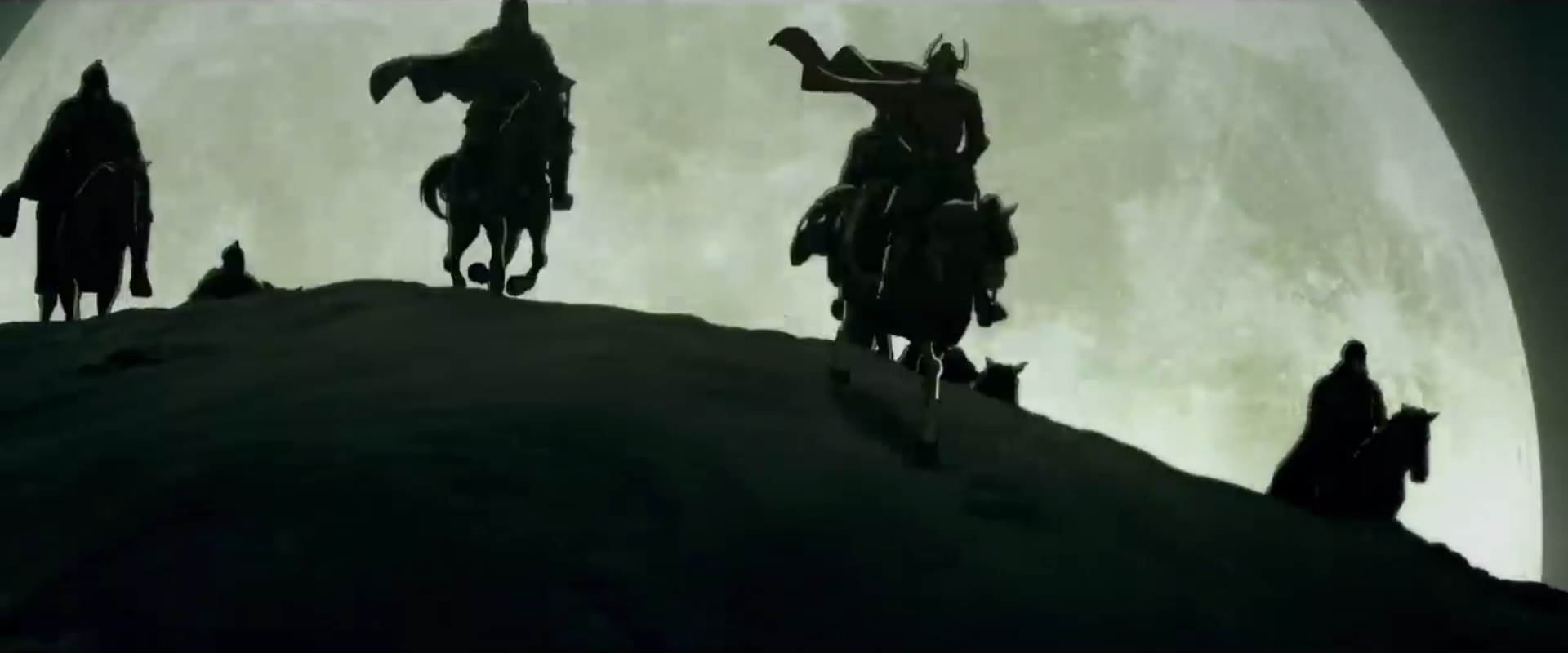
Mounted on his horse, with the full moon behind him, Helm blows his horn. Riders gallop over the crest of a hill in front of the full moon. We get an overhead view of riders. I suspect this scene is a slight rewind to the first scenes we saw of Helm and the riders.

Mounted, Háma draws his bow. This seems to be the only scene where he is mounted.
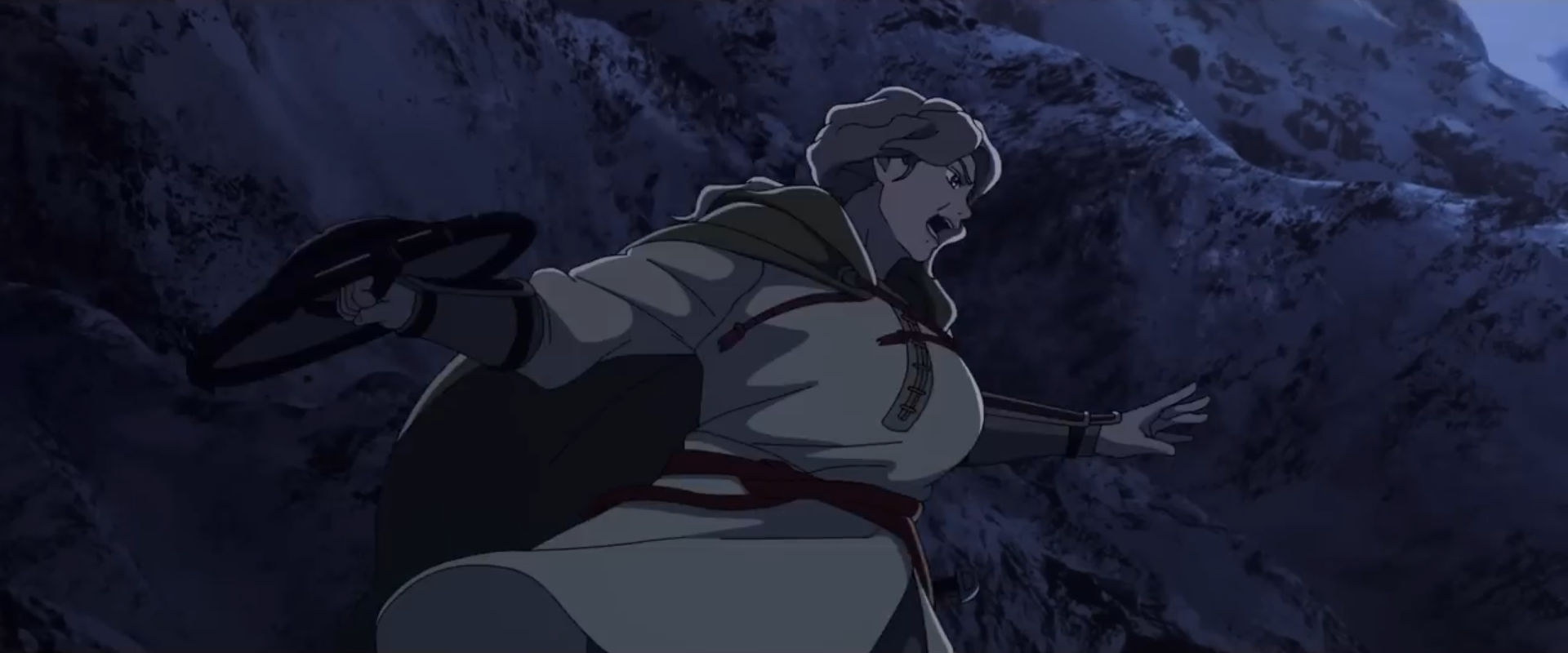
Then there is another set of apparently related scenes. Olwyn, a lady’s maid to Héra and one-time shield maiden (as told in the Visual Companion), spins around like a discus thrower and tosses a shield. Héra reaches up and catches a shield (the same shield, apparently) as Wulf attacks her. Héra rolls on the ground. Wulf, wearing the crown of Rohan, brings his sword down hard against Héra. She holds up the shield and Wulf’s sword breaks against it.
On first watch, I was a bit skeptical of Olwyn’s tactic. Not that I am against the occasional use of a shield as an offensive weapon; I just think it loses its effectiveness if you let it escape your grasp, except maybe if you happen to be Captain America. However, that was before I realized that Olwyn’s objective seemed to be to get the shield to Héra.
We then get another isolated scene: amid falling snow, a battered Helm, who does not appear to be dressed very warmly, embraces Héra.
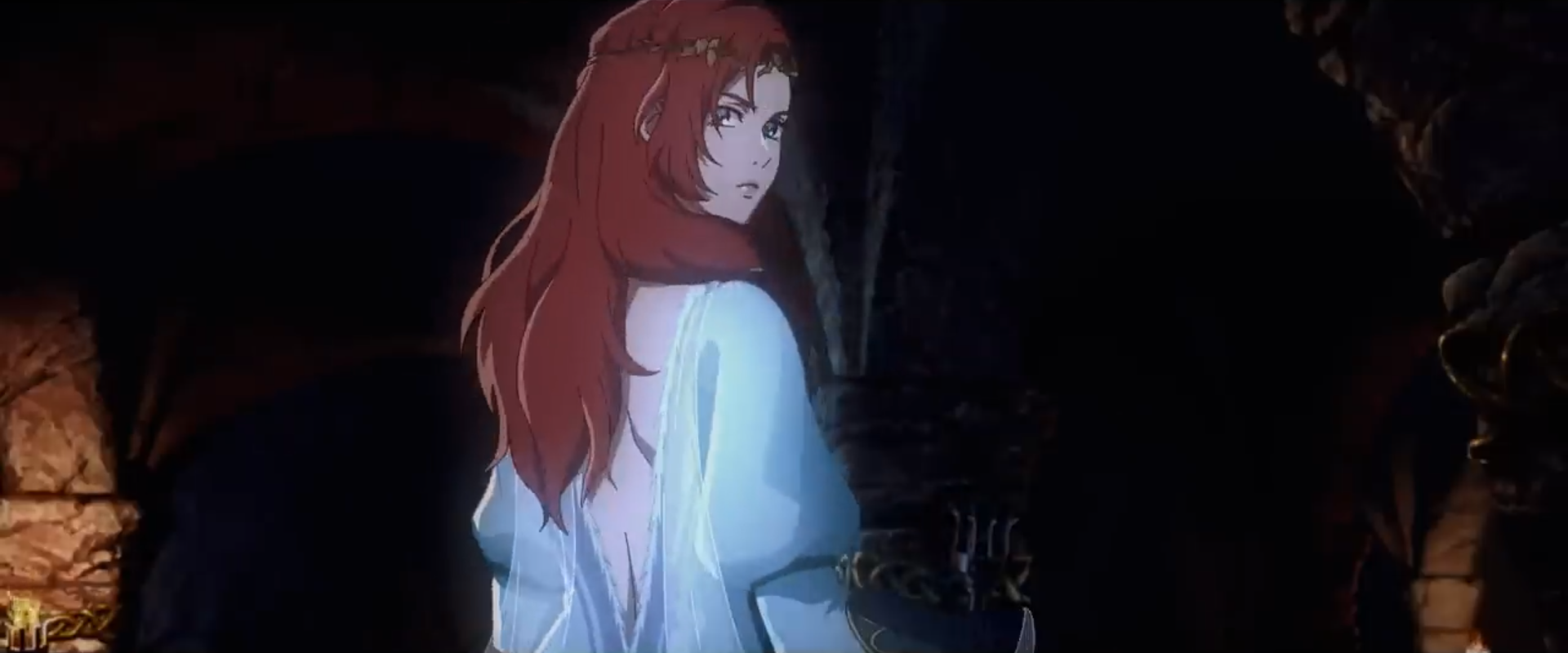
In the final scene Héra, wearing a white dress, jumps into a horse’s saddle and looks back. She is indoors somewhere. Given that she seems to be wearing the same outfit she wears during her fight with Wulf, I suspect she is in the Hornburg, if she has not already infiltrated Edoras.
The Last Line
Some of us have been anticipating this film for years, and now less than a month remains until the release of The War of the Rohirrim in most countries (December 13 in the United States). We have already seen one English trailer, one Japanese trailer, and various items of merchandise. Likely there will be at least one more trailer to come, a full soundtrack release (on December 6), and who knows what else Warner Bros. has up their sleeve now that the film’s release is imminent? However, on a personal level, I believe nothing has increased my anticipation for the film—other than knowing the story it purports to tell—as much as the song “The Rider” by Paris Paloma. But what do you think? Do you feel “The Rider” fits well with the other songs from the live-action films, such as “May It Be” and “Into the West”?
NOTICE: For fans who will be in the United Kingdom on Tuesday, December 3, the World Premiere of The Lord of the Rings: The War of the Rohirrim will be held on that date at Leicester Square in London. A select number of fans will be admitted to the Red Carpet Fan Area. If you wish to apply for passes, go here for the General Access Fan Area, or here for the Accessible Fan Area, and fill out the Fan Area Application Form. The application deadline is 23:59 GMT on November 20. Applicants must be 18 or older. Winners will be randomly selected. Each winner will receive two passes to the red carpet area.
[This article was updated on 31st December 2024 to correct the misheard lyrics as noted above]
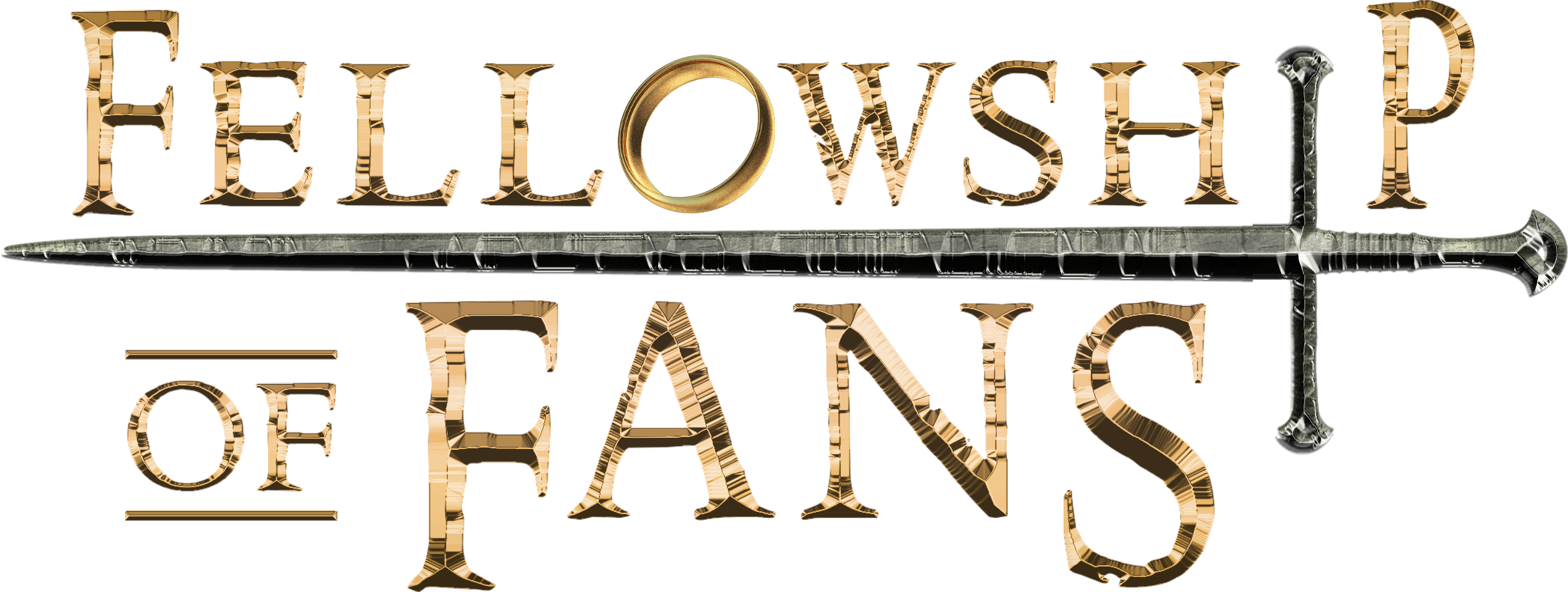
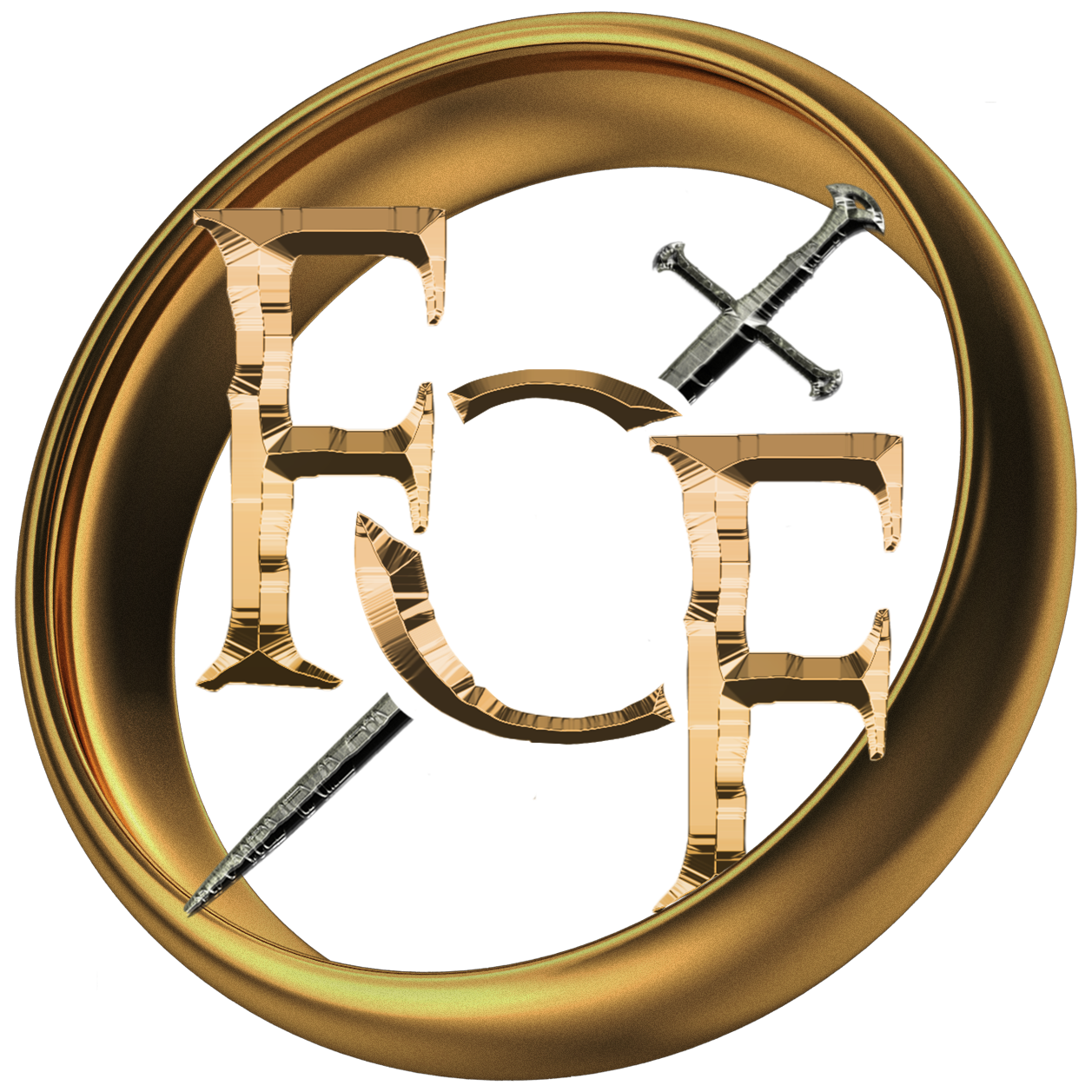
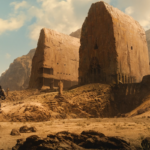
No Comments